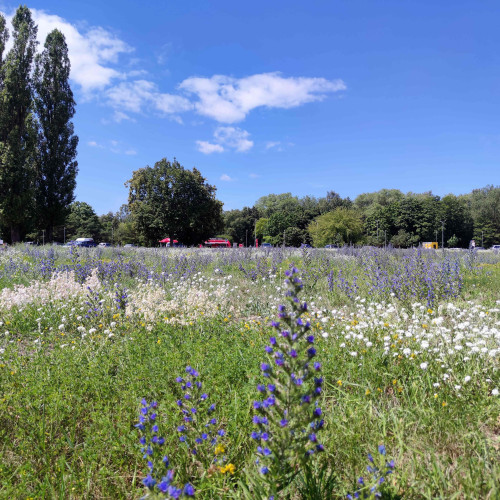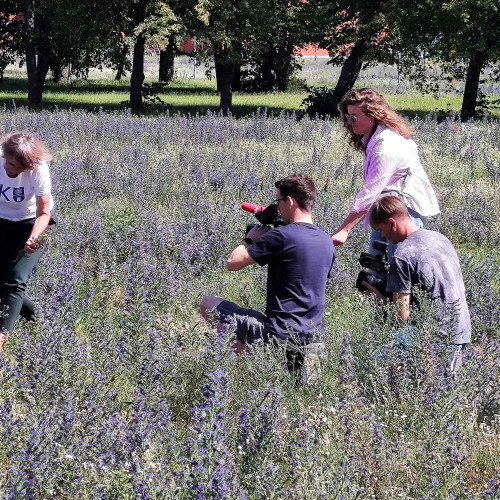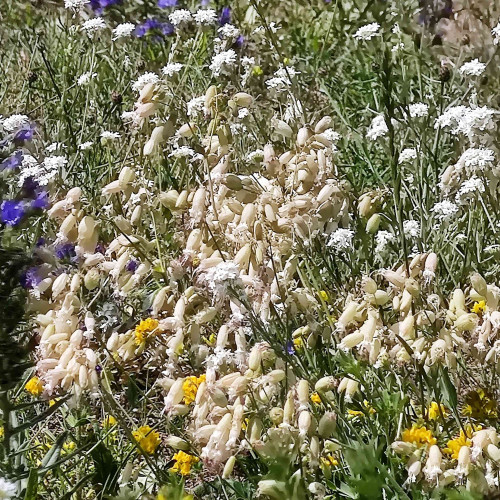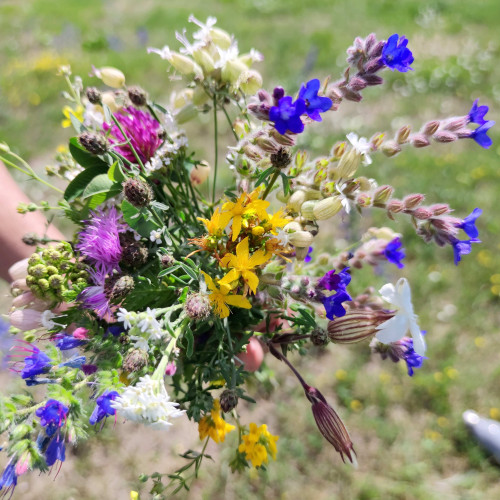The green areas in the territory of the KU campus cover approximately 20 ha. The researchers who invited the media for a walk around the campus today said they enjoyed the view and the content of the meadows every day.
According to prof. Asta Klimienė, biologist and coordinator of the KU Botanical Garden, the meadow that has blossomed so abundantly in the territory of the city is a real asset. Having gathered the flowering plants in the meadow into a bouquet, she counted more than twenty of them, most of them having medicinal properties, smelling pleasantly, and providing food and shelter for the meadow's insects and birds. "We see a meadow alive and kicking. This is not the brownish-black field we used to see here in the summer", says prof. Klimienė. She also notes that the increasingly warmer summers around the world are also changing the fashion for urban landscaping: short lawns are being replaced by meadows or more heat-tolerant vegetation wherever possible, and meadow plants and various species of bent grass are also moving into the flowering plant beds.
According to biodiversity experts, reducing the amount of green areas that are mown and promoting natural regeneration processes is one of the ways in which urban environments can be saved from the effects of a warming climate. Vegetation that is naturally adapted to the characteristics of the existing soil is not only able to survive, but also protects the soil from erosion, and flowering plants become an important food source for the rich insect world, which is important for a healthy environmental ecosystem. Vibrant green spaces buffer heat waves that are dangerous to human health.
The first initiatives to replace lawns with meadows originated in research communities working on global environmental change and on the factors that cause or mitigate climate change. Prof. dr. habil. Sergey Olenin gives the example of Michigan State University in the USA, which has converted lawns on its academic campus into flowering meadows; they help to preserve pollinator populations and create a more natural, attractive environment. "Another example from the US is the State of Minnesota, which pays farm owners to plant flowering and bee-friendly crops on their land," says the scientist.
Dr Robertas Staponkus, junior researcher at the KU Marine Research Institute, says he is pleased to see that the flowering meadow is already teeming with bees and bumblebees. The latter are fast approaching the brink of extinction, and Staponkus found several species here. "Notice that the heat in the meadow is also quite different from that on concrete tiles or asphalt. This is confirmed by temperature measurements," says dr Robertas Staponkus, highlighting another value of the meadow. He and his colleagues dismiss fears about the danger of ticks. They need wet meadows and an abundance of wildlife to spread. In addition, vaccinations are effective in protecting people against ticks.
Upon having made the first step in Klaipėda, KU invites its businesses, organisations, institutions as well as environmental care and management companies to hear the researchers' arguments and to change their usual ways.
According to dr Benediktas Petrauskas, Vice-Rector for Infrastructure and Development at KU, the KU green area maintainers will only cosmetically shorten narrow stretches of greenery at the edges of pavements or buildings in the summer. Meadows that have grown up on KU territory will only be mown in late autumn to give the vegetation an equal start in spring. The abundant flowering of the meadows, the eye-pleasing colours and the positive public reaction to the innovation, according to Petrauskas, also allow for new ideas to be considered, for example, the honey-scented meadow could be the future home of several beehives.










